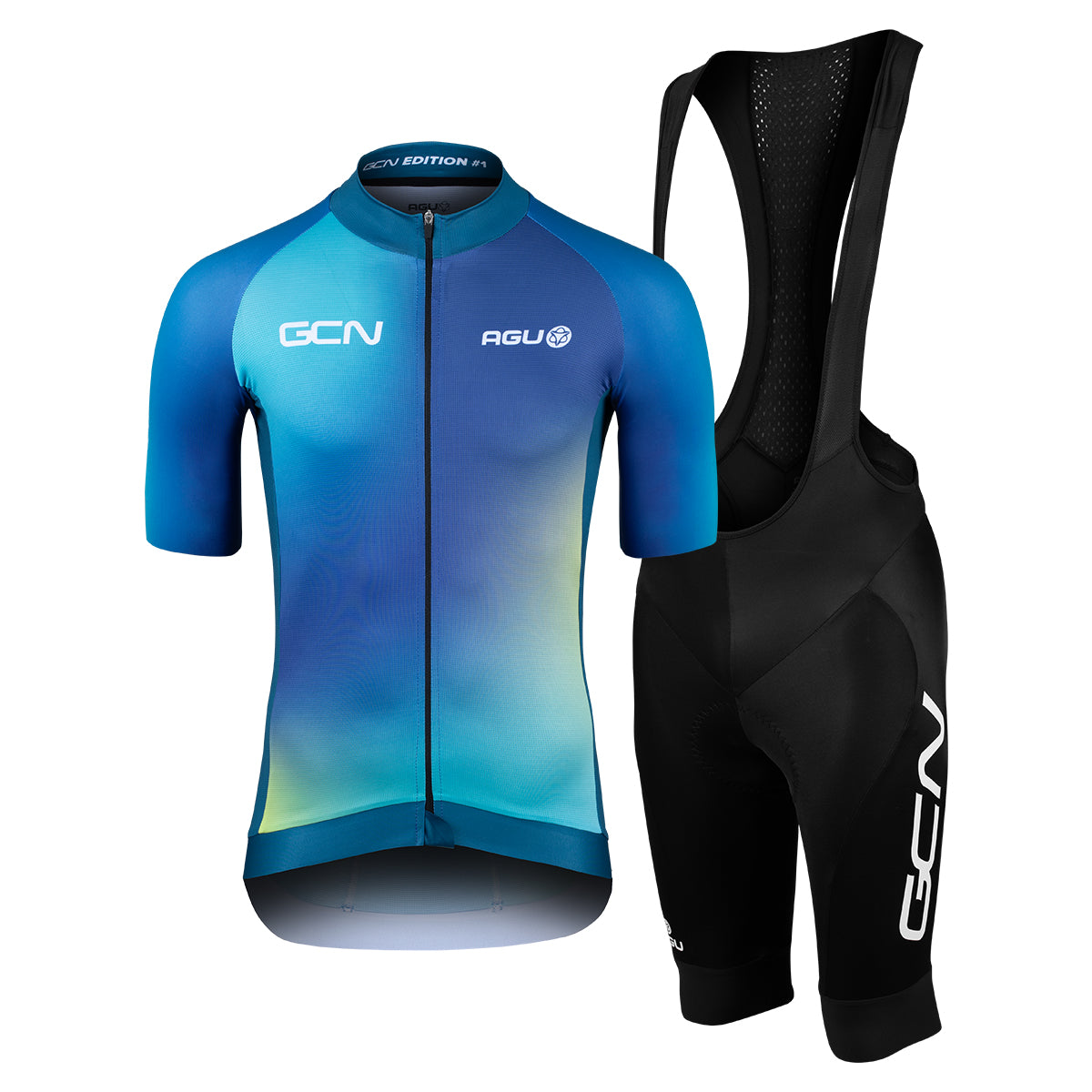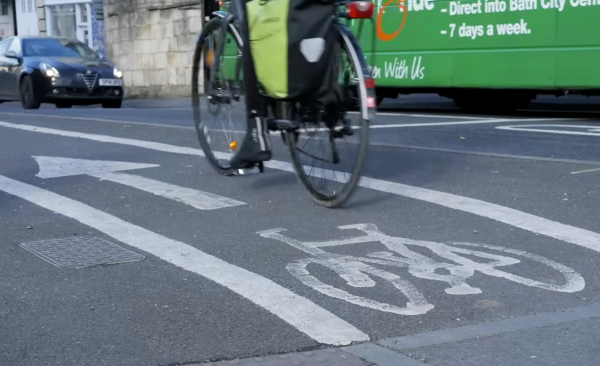How to handle traffic when cycling
Navigating traffic for the first time on a bike can be daunting so Manon Lloyd and Hank have put together these simple tips to help make it more comfortable
Danny Walter
Head of Editorial Production
If you’re just getting into cycling you might be a little fearful of hitting the roads and riding with other road users for the first time. Especially if you live in or near a city and the volume of traffic is high. Using all their riding experience GCN’s Manon Lloyd and James Lowsley-Williams (aka Hank) share their tips to help make things a little easier while keeping you as safe as possible.
How to position yourself on the road
The important thing to remember here is that you are a road user with as much right to take up space on the road as any other vehicle. So don’t feel that you have to ride tightly to the gutter, where the road surface can often be uneven or feature drains and other obstacles.
When on quieter roads or lanes, as you approach a junction you can take a bit more of a dominant position in the road to help prevent other road users trying to pass you when it’s not safe to do so. This isn’t just a tip from us, it’s actually written in the UK’s Highway Code.
When riding on busier roads with faster moving traffic you should position yourself about half a metre from the road’s edge. This will help keep you away from roadside obstacles that need to be swerved, but also allows a little extra insurance against vehicles behind trying to overtake at inappropriate times.
Read more: What causes road rage between cyclists and drivers? We asked a transport historian
How cyclists should handle junctions
As you approach a junction you need to think about signalling your intentions to other road users. This can simply be done by putting your arm out to the side of whichever direction your planning to take. As you start to approach the junction and as you’re making the arm motion, take a moment to glance back over your shoulder to check the traffic situation and that nothing is about to come past you. You can always stop to check if you're not comfortable signalling and looking over your shoulder at the same time.
Read more: Top tips for cycling to work: Beginners guide to commuting by bike
Assuming it is clear to do so, slowly move out towards the middle of the your lane of traffic so you have right of way ahead of the cars behind you. Stop and make sure it is clear both ways. If you’re not sure of the speed at which traffic is flowing on the road you're about to join, take a moment to gauge it or wait for it to become completely clear before signalling once more and then pulling out to join the new road.
Filtering through traffic
Sometimes when cycling in traffic, as you approach a junction it is necessary to filter your way through the traffic to the front to stop you getting caught in the middle ground where things can feel a little unsafe. However, be aware of your surroundings and only filter at low speeds and when it is safe to do so. Try to pass on the outside of traffic whenever possible.

© GCN
At some traffic lights you'll find dedicated cycling lights that help you get a head start from other vehicles
Sometimes you’ll find designated areas for cyclists at the front of traffic lights which allow you to get ahead of the traffic. They can come with their own set of traffic lights for cyclists which will allow you to pull away a few seconds ahead of the other vehicles.
Always be aware of other road users
Perhaps one of the biggest things to consider when heading out on busy roads is general awareness of what every other road user is doing or is about to do. This is particularly important at roundabouts, where even though you might have right of way, you shouldn't assume that other traffic is going to stop or move for you. So tackle them with a little bit of caution.
Stay switched on and never assume that others have seen you or that they’re going to behave in the way you’d expect. It is unfortunately the case that you will occasionally experience manoeuvres from others that you just didn’t see coming, so always try and have enough space to react if circumstances need it.
How should you ride in a group?
We’re all trying to use the road systems in as thoughtful way as possible and this works both ways. So if you are riding in a group try and consider others and think about how much space you're taking up, especially if in big groups. Riding two abreast is generally fine but if you need to drop to single file to allow traffic to pass then do so. Or if you can see there’s clear space for a vehicle behind to pass you then signal accordingly if safe to do so.
Read more: 5 top tips to make every ride a great one
Try and incorporate bike lanes into your ride

© GCN
Try and find bike paths and bike lanes which are more pleasant places to ride away from traffic
Rides are generally more pleasant when they’re not surrounded by heavy traffic so it’s worth taking time to plan your route ahead and see where you can incorporate bike lanes or quieter roads. The route planning app Strava is a great way to find dedicated cycle paths and routes used frequently by other cyclists. These are also great places to build skills and general confidence on the bike if you are still relatively new. Bear in mind though that there are still other users like pedestrians, horses or other cyclists so be respectful to them. You'll often find that paths can cross roads or pavements at certain points so again be mindful of how you negotiate those.
Depending on where you ride in the world the laws can be different so make sure you check what’s appropriate for the country you're riding in. Hopefully these tips help you navigate the traffic with more confidence. If you have any of your own or think we’ve missed any obvious ones then please let us know in the comments below this article.
For more cycling tips and advice check out our How to skills section on the GCN website.

.jpg?rect=957,780,3097,3060&w=600&auto=format)

.png?w=600&auto=format)












